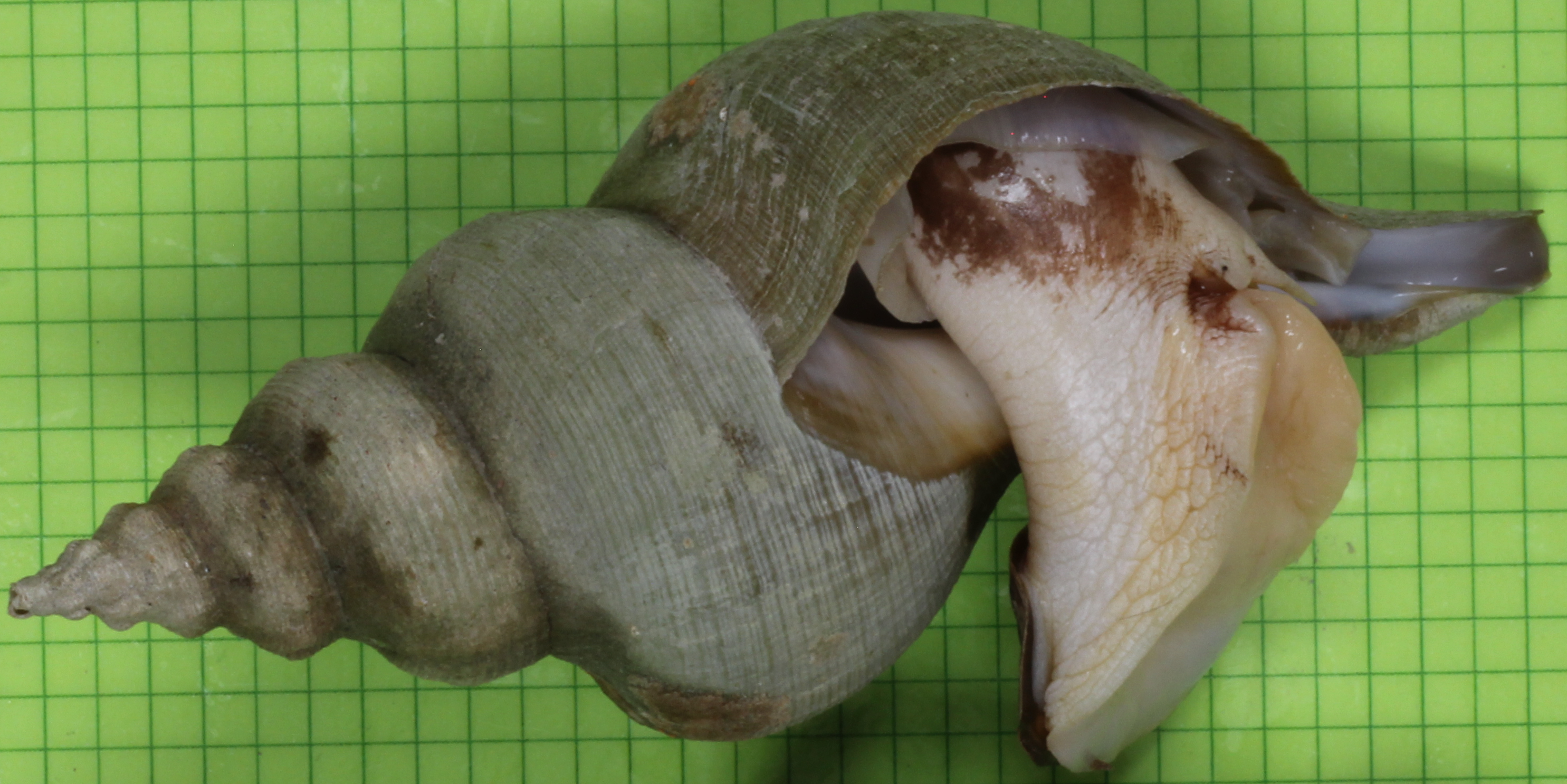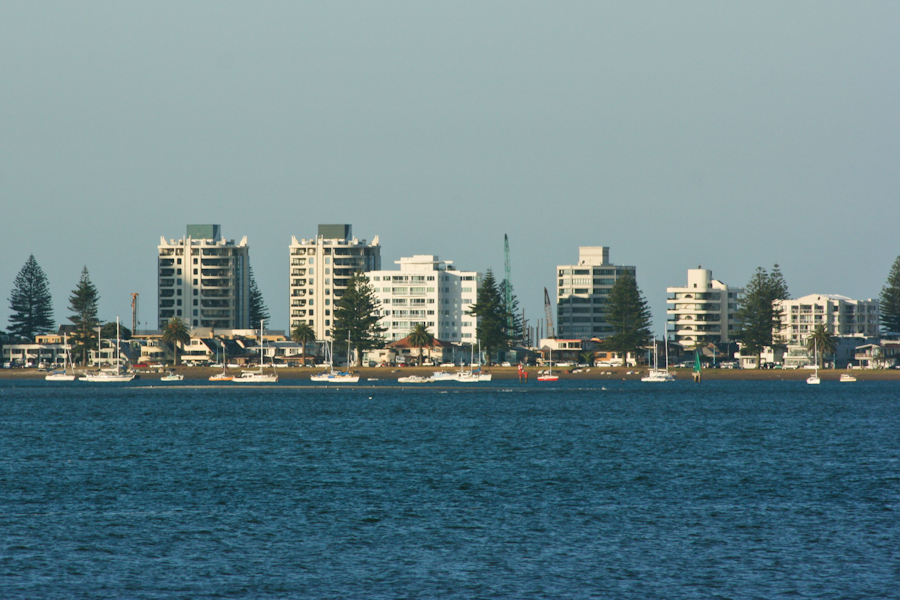|
Buccinulum Vittatum
''Buccinulum vittatum'' is a species of sea snail, a marine gastropod mollusc in the family Tudiclidae.MolluscaBase eds. (2020). MolluscaBase. Buccinulum vittatum (Quoy & Gaimard, 1833). Accessed through: World Register of Marine Species at: http://www.marinespecies.org/aphia.php?p=taxdetails&id=491394 on 2020-06-20 Distribution This species is endemic to New Zealand. It is found all around New Zealand and as far south as the New Zealand subantarctic islands. The species was first documented in 1833 by Jean René Constant Quoy and Joseph Paul Gaimard. Taxonomy Four subspecies were previously recognised but they are currently considered to be taxonomically invalid based on shell morphology and genetic data. ''B. v. vittatum'' (the nominate subspecies ''Buccinulum vittatum vittatum'') is found in the northern half of the North Island; ''B. v. bicinctum'' is found on the Chatham Islands; ''B. colensoi'' is found on the South-East coast of the North island; ''B. v. littorinoides'' i ... [...More Info...] [...Related Items...] OR: [Wikipedia] [Google] [Baidu] |
Jean René Constant Quoy
Jean René Constant Quoy (10 November 1790 in Maillé, Vendée, Maillé – 4 July 1869 in Rochefort, Charente-Maritime, Rochefort) was a French naval surgeon, zoologist and anatomist. In 1806, he began his medical studies at the school of naval medicine at Rochefort, Charente-Maritime, Rochefort, afterwards serving as an auxiliary-surgeon on a trip to the Antilles (1808–1809). After earning his medical doctorate in 1814 at Montpellier, he was surgeon-major on a journey to Réunion (1814–1815). Along with Joseph Paul Gaimard, he served as naturalist and surgeon aboard the ''Uranie'' under Louis de Freycinet from 1817 to 1820, and on the ''French ship Astrolabe (1817), Astrolabe'' (1826–1829) under the command of Jules Dumont d'Urville. In July 1823 he and Gaimard presented a paper to the Académie royale des Sciences on the origin of coral reefs, taking issue with the then widespread belief that these were constructed by coral polyps from bases in very deep water and arguin ... [...More Info...] [...Related Items...] OR: [Wikipedia] [Google] [Baidu] |
Buccinidae
The Buccinidae are a very large and diverse taxonomic family of large sea snails, often known as whelks or true whelks.Bouchet, P.; Gofas, S. (2010). Buccinidae. In: Bouchet, P.; Gofas, S.; Rosenberg, G. (2010) World Marine Mollusca database. Accessed through: World Register of Marine Species at http://www.marinespecies.org/aphia.php?p=taxdetails&id=149 on 2010-12-30 The family includes more than 1500 species. Taxonomy The family Busyconidae was for a time treated as a subfamily of Buccinidae called Busyconinae. Genera '' Antillophos'', '' Engoniophos'', ''Phos'', ''Nassaria'', '' Tomlinia'', ''Anentome'' and '' ''Clea'''' were treated within family Buccinidae, but they were moved to Nassariidae in 2016. Habitat The true whelks occur worldwide in all seas from tropical oceans to the cold seas of the Arctic Ocean and the Southern Ocean. They are found from the intertidal to the bathypelagic zones. Most prefer a solid bottom, but some inhabit sandy substrates. Description ... [...More Info...] [...Related Items...] OR: [Wikipedia] [Google] [Baidu] |
Arthur William Baden Powell
Arthur William Baden Powell (4 April 1901 – 1 July 1987) was a New Zealand malacologist, naturalist and palaeontologist, a major influence in the study and classification of New Zealand molluscs through much of the 20th century. He was known to his friends and family by his third name, "Baden". Biography Early life The name Baden had been a given name in a Powell family since 1731, when Susannah Powell née Thistlethwayte (1696–1762) gave to her child (1731–1792) the maiden name of her mother, Susannah Baden (1663–1692). The name Baden, particularly when associated with the surname Powell, became famous in 1900–1901, the year Arthur William Baden Powell was born, because of the siege of Mafeking, the most famous British action in the Second Boer War, which turned the British commander of the besieged, Robert Baden-Powell, into a national hero. Throughout the British Empire, babies were named after him. No family connection has yet been established between Ar ... [...More Info...] [...Related Items...] OR: [Wikipedia] [Google] [Baidu] |
HarperCollins
HarperCollins Publishers LLC is a British–American publishing company that is considered to be one of the "Big Five (publishers), Big Five" English-language publishers, along with Penguin Random House, Hachette Book Group USA, Hachette, Macmillan Publishers, Macmillan, and Simon & Schuster. HarperCollins is headquartered in New York City and London and is a subsidiary of News Corp. The company's name is derived from a combination of the firm's predecessors. Harper & Brothers, founded in 1817 in New York, merged with Row, Peterson & Company in 1962 to form Harper & Row, which was acquired by News Corp in 1987. The Scotland, Scottish publishing company William Collins, Sons, founded in 1819 in Glasgow, was acquired by News Corp in 1987 and merged with Harper & Row to form HarperCollins. The logo for the firm combines the fire from Harper's torch and the water from Collins' fountain. HarperCollins operates publishing groups in the United States, Canada, the United Kingdom, Austr ... [...More Info...] [...Related Items...] OR: [Wikipedia] [Google] [Baidu] |
Gastropod Shell
The gastropod shell is part of the body of many gastropods, including snails, a kind of mollusc. The shell is an exoskeleton, which protects from predators, mechanical damage, and dehydration, but also serves for muscle attachment and calcium storage. Some gastropods appear shell-less (slugs) but may have a remnant within the mantle, or in some cases the shell is reduced such that the body cannot be retracted within it (semi-slug). Some snails also possess an operculum that seals the opening of the shell, known as the Aperture (mollusc), aperture, which provides further protection. The study of mollusc shells is known as conchology. The biological study of gastropods, and other molluscs in general, is malacology. Shell morphology terms vary by species group. Shell layers The gastropod shell has three major layers secreted by the Mantle (mollusc), mantle. The calcareous central layer, ostracum, is typically made of calcium carbonate (CaCO3) precipitated into an organic matrix ... [...More Info...] [...Related Items...] OR: [Wikipedia] [Google] [Baidu] |
Cook Strait
Cook Strait () is a strait that separates the North Island, North and South Islands of New Zealand. The strait connects the Tasman Sea on the northwest with the South Pacific Ocean on the southeast. It is wide at its narrowest point,McLintock, A. H., ed. (1966''Cook Strait''from An Encyclopaedia of New Zealand, updated 18-Sep-2007. Note: This is the distance between the North Island and Arapaoa Island; some sources give a slightly larger reading of around , that between the North Island and the South Island. and has been described as "one of the most dangerous and unpredictable waters in the world". Regular ferry services run across the strait between Picton, New Zealand, Picton in the Marlborough Sounds and Wellington. The strait is named after James Cook, the first Ethnic groups in Europe, European commander to sail through it, in 1770. In Māori language, Māori it is named ''Te Moana-o-Raukawa'', which means ''The Sea of Raukawa''. The waters of Cook Strait are dominated by ... [...More Info...] [...Related Items...] OR: [Wikipedia] [Google] [Baidu] |
Chatham Islands
The Chatham Islands ( ; Moriori language, Moriori: , 'Misty Sun'; ) are an archipelago in the Pacific Ocean about east of New Zealand's South Island, administered as part of New Zealand, and consisting of about 10 islands within an approximate radius, the largest of which are Chatham Island and Pitt Island, Pitt Island (''Rangiauria''). They include New Zealand's easternmost point, the Forty-Fours. Some of the islands, formerly cleared for farming, are now preserved as Protected areas of New Zealand, nature reserves to conservation in New Zealand, conserve some of the unique flora and fauna. The islands were uninhabited when the Moriori people arrived around 1500 CE and developed Nunuku-whenua, a peaceful way of life. In 1835, members of the Ngāti Mutunga and Ngāti Tama Māori iwi from the North Island of New Zealand invaded the islands and Moriori genocide, nearly exterminated the Moriori, slavery, enslaving the survivors. In the period of European colonisation, the New ... [...More Info...] [...Related Items...] OR: [Wikipedia] [Google] [Baidu] |
North Island
The North Island ( , 'the fish of Māui', historically New Ulster) is one of the two main islands of New Zealand, islands of New Zealand, separated from the larger but less populous South Island by Cook Strait. With an area of , it is the List of islands by area, world's 14th-largest island, constituting 43% of New Zealand's land area. It has a population of which is % of New Zealand's residents, making it the most populous island in Polynesia and the List of islands by population, 28th-most-populous island in the world. Twelve main urban areas (half of them officially cities) are in the North Island. From north to south, they are Whangārei, Auckland, Hamilton, New Zealand, Hamilton, Tauranga, Rotorua, Gisborne, New Zealand, Gisborne, New Plymouth, Napier, New Zealand, Napier, Hastings, New Zealand, Hastings, Whanganui, Palmerston North, and New Zealand's capital city Wellington, which is located at the south-west tip of the island. Naming and usage The island has been known ... [...More Info...] [...Related Items...] OR: [Wikipedia] [Google] [Baidu] |
Joseph Paul Gaimard
Joseph Paul Gaimard (31 January 1793 – 10 December 1858) was a French naval surgeon and naturalist. Biography Gaimard was born at Saint-Zacharie on January 31, 1793. He studied medicine at the naval medical school in Toulon, subsequently earning his qualifications as a naval surgeon. Along with Jean René Constant Quoy, he served as naturalist on the ships ''L'Uranie'' under Louis de Freycinet 1817–1820, and '' L'Astrolabe'' under Jules Dumont d'Urville 1826–1829.Google Books Discovery of Australia's Fishes: A History of Australian Ichthyology to 1930 by Brian Saunders During this voyage they discovered the now extinct giant of |
New Zealand Subantarctic Islands
The New Zealand Subantarctic Islands comprise the five southernmost groups of the New Zealand outlying islands. They are collectively designated as a UNESCO World Heritage Site. Most of the islands lie near the southeast edge of the largely submerged continent centred on New Zealand called Zealandia, which was riven from Australia 60–85 million years ago, and from Antarctica 85–130 million years ago. They share some features with Australia's Macquarie Island to the west. History Until 1995, scientific research staff were stationed permanently at a meteorological station on Campbell Island. Since then, the islands have been uninhabited, though they are periodically visited by researchers and tourists. Protection of reserves was strengthened in 2014, becoming the largest natural sanctuary in the nation. Islands ; Antipodes Islands: Antipodes Island, Bollons Island, the Windward Islands, Orde Lees Island, Leeward Island, South Islet ; Auckland Islands: ... [...More Info...] [...Related Items...] OR: [Wikipedia] [Google] [Baidu] |
Gaimard
Joseph Paul Gaimard (31 January 1793 – 10 December 1858) was a French naval surgeon and naturalist. Biography Gaimard was born at Saint-Zacharie on January 31, 1793. He studied medicine at the naval medical school in Toulon, subsequently earning his qualifications as a naval surgeon. Along with Jean René Constant Quoy, he served as naturalist on the ships ''L'Uranie'' under Louis de Freycinet 1817–1820, and ''L'Astrolabe'' under Jules Dumont d'Urville 1826–1829.Google Books Discovery of Australia's Fishes: A History of Australian Ichthyology to 1930 by Brian Saunders During this voyage they discovered the now extinct giant of |





